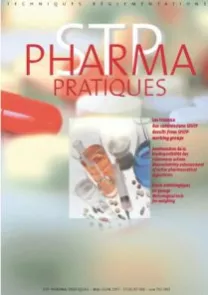All publications
Understanding Microemulsions and Nanoemulsions in (Trans)Dermal Delivery
AAPS PharmSciTech - Jan 2025
Microemulsions and nanoemulsions are explored in pharmaceuticals for their potential in delivering clinically relevant drug doses across biological membranes. Despite extensive literature, there's a lack of clear distinctions between the two in terms of definitions and mechanisms: this review aims to uncover less obvious yet important mechanisms in transdermal drug delivery.
Investigation of the permeation enhancer strategy on benzoylaconitine transdermal patch: the relationship between transdermal enhancement strength and physicochemical properties of permeation enhancer
Eur J Pharm Sci. 2019 Oct 1;138:105009. doi: 10.1016/j.ejps.2019.105009. Epub 2019 Jul 12. - Jul 2019
In this study several permeation enhancers are evaluated for their ability to permeate high molecular weight benzoylaconitine. The results showed that Plurol® Oleique CC 497 enabled the highest permeation. FT-IR studies demonstrated that the enhancer had strong interactions with the Stratum corneum, both in the hydrophilic and lipophilic regions. The optimized patch formulation showed excellent analgesic and antiinflammatory effect.
Skin Penetration and Permeation Properties of Transcutol®—Neat or Diluted Mixtures
AAPS PharmSciTech, Vol. 19, No.8 DOI: 10.1208/s12249-018-1196-8 - Nov 2018
In this critical article, the authors have reviewed numerous studies in order to elucidate the mechanism of action of the highly purified diethylene glycol monoethyl ether TRANSCUTOL® on skin penetration and permeation.
Development of a daphnetin transdermal patch using chemical enhancer strategy: insights of the enhancement effect of Transcutol P and the assessment of pharmacodynamics.
Drug Dev Ind Pharm. 2018 Oct;44(10):1642-1649. doi: 10.1080/03639045.2018.1483391. Epub 2018 Jul 2. - Jul 2018
A patch for transdermal delivery of daphnetin was developed using Transcutol® P as permeation enhancer.
The study showed:
10% Transcutol® P led to a significant increase in drug release from the patch.
Patch exhibited analgesic and anti-inflammatory activity
Gels, crèmes, formes semi-solides : de leur développement à leur enregistrement. [Gels, creams, semi-solid forms: from their development to their registration]
STP Pharma Pratiques – September October 2018 – 28(5) 181-250 – ISSN 1157-1497 - 2018
The SFSTP commission on topical dosage forms published an article reviewing all the steps for their development to registration.
Interestingly this article is both in French and English languages.
Table of content:
Introduction
I Definition of a semi-solid
II Tests and studies applicable in evaluation of semi-solid forms from development up to the phase of routine use
2.1 Regulatory requirements
2.2 Relevant tests in development
2.2.1 Conventional characterization tests
2.2.2 Characterization tests specified to evaluate performance of the formulation
2.2.3 Additional characterization tests specified to evaluate performance of the formulation
III QbD approach related to the formulation
3.1 Different elements of the QbD
3.2 When to set up QbD ?
3.3 Definition of QTPP
3.4 CQAs toward evaluation of risks of process
3.5 Example of CMAs studied in case of a semi-solid formulation
3.6 Example of CPPs studied in case of a semi-solid formulation
Conclusion
IV Conclusions and perspectives
